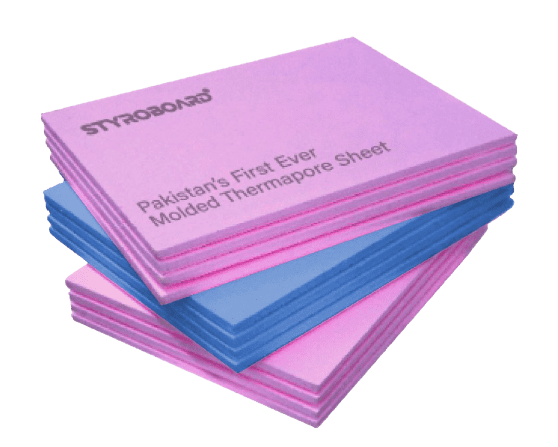
Discover the world of eco-friendly insulation. Explore types, benefits, costs, installation, and government incentives. Upgrade to sustainable living!
Introduction
As we navigate the challenges of a rapidly changing climate, adopting sustainable practices in our homes has never been more critical. One such practice is choosing environmentally friendly insulation. In this comprehensive guide, we will delve into the world of eco-conscious insulation. We’ll explore what environmentally friendly insulation is, discuss various types available, highlight its numerous benefits, and even delve into the costs and government incentives associated with this sustainable choice. So, whether you’re a homeowner or builder, let’s embark on a journey to a more sustainable and energy-efficient future.
What is Environmentally Friendly Insulation?
Environmentally friendly insulation, often referred to as eco-friendly or green insulation, is a sustainable alternative to conventional insulation materials. It’s designed with a focus on reducing its environmental impact while providing effective thermal and acoustic insulation for buildings. The key distinction lies in the materials used and the manufacturing processes involved. These insulation options prioritize renewable, recycled, or natural resources, as well as minimize energy consumption during production.
Types of Environmentally Friendly Insulation
- Recycled Materials: Insulation made from recycled materials, such as recycled glass or denim, reduces the demand for new resources and landfill waste.
- Cellulose Insulation: Derived from recycled paper products, cellulose insulation is treated with fire-retardant chemicals to enhance its performance.
- Natural Fiber Insulation: Materials like cotton, hemp, and wool are used to create insulation with low environmental impact and excellent thermal properties.
- Aerogel Insulation: This innovative material is highly effective at insulating and is made from silica gel, offering exceptional thermal performance.
- Soy-Based Insulation: Made from soybean oil, this option provides a sustainable alternative to traditional foams.
Benefits of Environmentally Friendly Insulation
- Reduced Environmental Impact: Eco-friendly insulation reduces carbon footprint by utilizing sustainable and recycled materials.
- Energy Efficiency: Improved insulation performance results in reduced energy consumption and lower utility bills.
- Healthier Indoor Air Quality: Non-toxic materials in environmentally friendly insulation contribute to better indoor air quality.
- Enhanced Comfort: These insulation types provide effective thermal and acoustic insulation, creating a comfortable living environment.
- Durability: Many eco-friendly insulation options are durable and long-lasting, reducing the need for replacement.
Section 4: Cost of Environmentally Friendly Insulation
The cost of environmentally friendly insulation can vary depending on the type of material chosen, installation complexity, and geographic location. While initial costs may be slightly higher than traditional insulation, the long-term benefits often outweigh the investment. Reduced energy bills, extended lifespan, and improved indoor comfort can offset the initial expense. It’s essential to consider the overall return on investment (ROI) when evaluating the cost-effectiveness of environmentally friendly insulation.
Where to Buy Environmentally Friendly Insulation
Environmentally friendly insulation can be found at a variety of locations, including home improvement stores, specialty eco-friendly retailers, and online suppliers. It’s important to research and choose reputable suppliers who provide certified eco-friendly insulation products. Look for certifications such as GREENGUARD or ENERGY STAR to ensure the insulation meets environmental and performance standards.
How to Install Environmentally Friendly Insulation
Installation methods for environmentally friendly insulation vary depending on the material chosen. While some options, like recycled denim batts, can be installed similarly to traditional insulation, others may require specialized techniques. It’s crucial to follow manufacturer guidelines and, in some cases, consult with a professional installer experienced in eco-friendly insulation. Proper installation ensures the insulation’s effectiveness and maximizes energy efficiency benefits.
Government Rebates and Incentives for Environmentally Friendly Insulation
Many governments and municipalities offer incentives to promote the use of environmentally friendly insulation. These incentives may include tax credits, rebates, or grants to encourage homeowners and businesses to invest in sustainable insulation solutions. Research local and national programs to take advantage of financial incentives that can significantly offset the initial cost of eco-friendly insulation. These programs aim to both reduce energy consumption and support environmentally responsible choices.
Tips for Choosing Environmentally Friendly Insulation
- Assess Your Needs: Consider your specific insulation needs, such as thermal resistance (R-value) and soundproofing requirements.
- Material Suitability: Evaluate the insulation materials available and choose the one that aligns with your environmental and performance goals.
- Certifications: Look for certifications and labels that confirm the product’s eco-friendliness and performance standards.
- Professional Consultation: If unsure, consult with insulation professionals who specialize in eco-friendly solutions.
Things to Consider When Installing Environmentally Friendly Insulation
- Moisture Control: Ensure proper moisture management to prevent mould and degradation of natural insulation materials.
- Ventilation: Proper ventilation is crucial to maintain indoor air quality and prevent moisture buildup.
- Sealing Gaps: Effective air sealing is essential to optimize insulation performance and reduce drafts.
The Future of Environmentally Friendly Insulation
The future of environmentally friendly insulation looks promising as innovations in sustainable materials and manufacturing processes continue to evolve. We can anticipate even more eco-conscious options, improved performance, and wider availability. With a growing emphasis on sustainability and energy efficiency, eco-friendly insulation will play a significant role in reducing our carbon footprint and creating more comfortable, sustainable living spaces.
Conclusion:
Environmentally friendly insulation is a crucial component of sustainable building practices. It offers a range of benefits, including reduced environmental impact, energy savings, improved indoor air quality, and enhanced comfort. While the initial cost may be slightly higher, the long-term advantages make it a wise investment. As governments incentivize eco-friendly choices, and innovation continues to drive the industry forward, environmentally friendly insulation will undoubtedly play a pivotal role in creating a more sustainable and energy-efficient future. Choose wisely, and you’ll contribute to a greener, healthier planet while enjoying the benefits of a well-insulated home.
